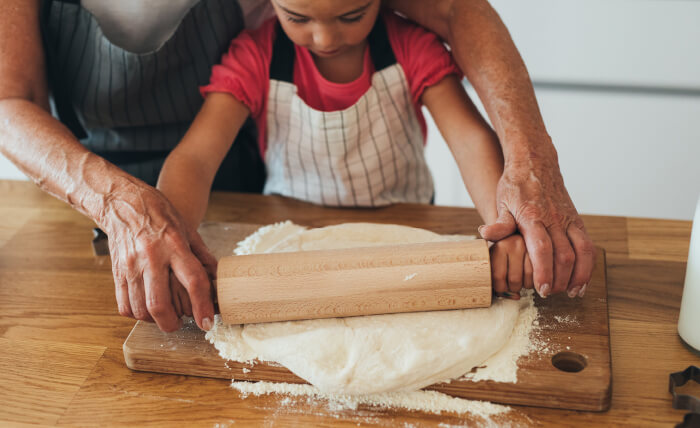Mindful Tasks
Mindfulness is the ability to apply complete focus and attention to our conscious experiences. With practice, mindfulness can be developed and improved upon just like any other skill…an important goal in doing meditation and improving your focus is to eventually bring this same focus into your everyday activities.

- Cleaning
-
Cleaning (vacuuming, sweeping, mopping) is another great everyday activity that we can practice doing more mindfully, whether it's vacuuming, sweeping, dusting, or whatever.
When vacuuming, turn your mind toward the motions of your body.
Pay attention to the movements in your legs (especially how your weight shifts on your body when you turn or change direction), other times pay attention to the movements in your arms (the physical motions of moving the vacuum back-and-forth).
source
- Cooking
-
Preparing food to eat is something we do every day to nourish our bodies, doing so mindfully can help us nurture our hearts and minds as well.
Bringing mindfulness into each stage of meal preparation, from shopping to plating, can help us find peace in this daily, often stressful task and make meal times more enjoyable.
Take time to set intentions by thinking about why you are cooking, who else you are feeding, how hungry you are, and how you are feeling about the task. Feeling grateful for the food is another way to be mindful, thinking about where the food came from and what sustenance it will provide.
Focus on the task at hand, eliminate any distractions like TV and tune into all your senses to fully experience the activity. As you peel, slice, and cook, notice the colors, smells, sounds, and textures.
Mindful cooking is a great way to engage with our loved ones; no matter how young or old, there is always a way for others to help with the activity of preparing meals, creating more connection between families.
https://www.goodfood.com.au/good-health/how-to-master-the-art-of-mindful-cooking-20171106-gzfnf6
-
Eating
-
Eating is another very useful everyday activity that you can apply mindfulness to.
First, you can pay attention to the many different aspects of the food: how it tastes, the temperature of the food, and the texture of the food. Second, you can pay attention to the actual physical sensations of eating: chewing, swallowing, and even digesting.
I have found when I apply mindfulness to eating, it usually makes me enjoy my meals more. Also, it causes me to eat slower, and consequently eat less because I am more observant of when my stomach feels satisfied.
Interestingly, a recent study confirms that "mindful eating" can indeed reduce food intake and improve flavor – because you're more likely to savor every bite and feel more satisfied. source
- Gardening
-
Gardening is beautifully suited to be a mindful activity.
When you are present in the garden, there are so many sensory experiences to intentionally connect with – pause and scan the environment.
Visually, what do you see when you look in your garden? You will see plants growing – at various stages of growth, different colors, producing fruits at different times in the season. You may see other living beings in the garden – worms, birds, insects – who are making their way in the world.
Your hands may touch the plants, with smooth, rough, or fuzzy surfaces. You may plunge your hands into the rich, cool earth. Perhaps it just rained and you feel the dampness on your hands and clothes. On a warm day, you may feel the sweat on your brow or other parts of your body.
You may smell different things – the growing things, the pungent earth, compost that is "cooking."
This relationship to land and growing things increases our gratitude for the food we eat and the wonder of the life we're living.
